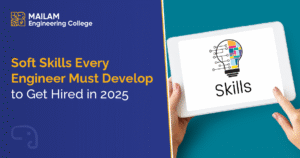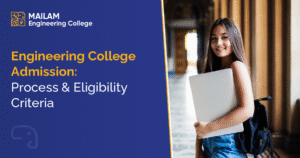Introduction
AI as a learning mode has already revolutionised education by changing the traditional education model into the basis for the individual approach to learners.
Techniques employing data sciences are no longer a novelty but an evolution that can only imply positive changes concerning the teaching and learning processes and the fitness of the learning process as a supply for the call for increased learner engagement and the demands for better learning outcomes.
Thus, the article under discussion describes the impact of data analytics on education and individual learning services for students in different countries.
However, this phenomenon is the most important one for pursuing the agenda of higher education.
Engaging AI in institutions of higher learning can help personalise learning environments, improve student contributions, and address issues arising from traditional modes of learning.
The Evolution of Education
Education as a social institution has changed from what can be categorised as the factory model of schooling over a shorter period. Since ancient times, teachers have often implemented behaviours regarding students, especially without considering other forms, needs, methods, or speeds of learning. However, technology, such as artificial intelligence and big data, has contributed to this change.
Understanding AI-Powered Learning
The method based on independent learning involving artificial intelligence techniques is called adaptive tutoring. They can also provide/disseminate in real time on a learner’s efficiency or inefficiency to possibly change lessons. Given the method’s flexibility, every learner shall have opportunities to record enhanced performance. Method,
How AI and Data Could Personalise Higher Education
AI and a personalised learning approach are perfect remedies for everyday educational problems; however, several issues should be considered when applying these strategies.
Personalised Learning Experiences
Artificial intelligence means specific information about the student, which helps produce unique educational material. As a result, different students receive tailored instructions based on how their brains process information; this increases the effectiveness of learning.
Adaptive Learning Technologies
Indeed, current adaptive learning technologies evolve with the learner in complexity and rate. These crates keep the learners active while encouraging learning.
Improving Students’ Performance with Intelligent Data Analysis
AI can make intuitive learning possible through enhanced data analysis. By assessing a massive amount of data on students’ performance, engagement, and even conduct, AI has the potential to foresee other patterns in the future and determine any opportunities to help that might be necessary.
Understanding Students’ Data
These include examination scores and similar factors that allow educators to monitor the learning progression of specific learners. Insights from this kind of AI processing the collected data are used to help teachers educate learners about various subjects.
Predictive Analytics in Education
This entails addressing problems in education through preventive measures. To prevent these problems from getting any more complicated, educators make predictions about how they might develop in the future. They show future trends based on historical results and permit timely action.
Improving Teacher Efficacy
Teaching becomes more efficient with the help of AI systems and does not interfere with ineffective practices, including always being available to students. Teachers will enhance their jobs if such computers assume less important tasks like responding to questions or performing other related clerical work.
Learning Environment for Collaboration
Artificial intelligence can improve the learning environment by encouraging students to collaborate on projects in groups or pairs for discussions. As they leave school, this becomes useful because teamwork is encouraged in the real world.
Artificial Intelligence’s Impact on Personalized Learning
Beyond informing personalisation strategies, AI’s capacity to analyse data even provides a generalised educational strategy. With this insight across larger datasets, AI helps shape education policies by detecting patterns within them.
Continual Progression and Innovation
Educational institutions and technology developers must commit to ongoing progression and innovation. Being at the forefront of artificial intelligence research ensures that educational technologies remain applicable despite changing student needs.
Making Teachers Empowered
Artificial intelligence will not replace teachers; instead, it will enhance their abilities. Instead of lecturing or marking exams from morning to evening, these automated tools perform routine activities while enabling interaction about the student’s performance.
Enhancing Student Support Services
This trend is spreading to universities, which are now deploying AI-powered chatbots. For instance, the University of Murcia in Spain has deployed a chatbot that answered over 38,708 questions with an accuracy rate of 91%. These chatbots operate round the clock beyond regular office hours and do not disrupt staff structures while motivating students.
Collecting Useful Insights
Another use of chatbots is learning about what each student needs and wants. Universities can use this data to improve their programs and meet expectations better. Staffordshire University and Georgia Tech have implemented them for repetitive tasks while lecturers focus on teaching and research.
Promoting Emotional Wellbeing
Furthermore, AI chatbots help manage help health among students. Woebot, for example, tracks user moods while offering some form of emotional assistance during periods when counselling centres are overwhelmed. Nevertheless, universities must implement robust privacy measures with human checks to ensure the safety of student well-being at all times.
The Future of AI in Education: Personalised Learning and Gamified Platforms
Data analytics incorporated into games helps personalise challenges for learners via gamification learning platforms (GLP) that employ artificial intelligence (AI). Consequently, this motivates learners to interact with learning content more effectively.
Data Privacy Issues & Security Measures
However, there have been concerns about privacy issues regarding the collection and analysis of student data. Schools should deploy strong data protection measures to ensure confidential information is not leaked.
Addressing Algorithmic Bias
AI systems should be audited and updated frequently to ensure fairness and reduce bias. To this end, AI-driven education tools must remain valid and efficient.
The Digital Gap
We must bridge the digital divide, so all pupils can enjoy individualised study benefits regardless of origin or background.
Advantages of Tailor-made Learning
Intricate Attentiveness
Personalised education enhances engagement by providing learners with relevant and suitable content. Once engaged, students are more likely to remember information and become interested in learning.
Better Outcomes
Personalised education may improve academic outcomes when personal learning gaps are identified and targeted assistance is provided. For instance, students in these programs get help precisely as they need it, which improves their performance and helps them understand the material more deeply.
Adaptive Learning Paths
AI-powered learning allows for adaptive learning pathways by enabling their pacing. This flexibility benefits students who might need more time to understand certain concepts or want to go faster where they feel competent enough.
Data-Driven Decision Making
Today, educators can apply data analysis methods to make appropriate choices regarding curriculum development, teaching methodologies, resource allocation, etc. Thus, resources will be used appropriately within an educational institution.
How AI and Data Analytics Work Together
Immediate response time
The most significant benefit of an AI-driven education system over traditional systems that provide feedback only after exams, leading to delays in knowledge building, is its ability to give instant feedback.
Adaptive Learning Platforms:
For example, suppose a student has difficulty with certain topic areas, takes longer to grasp them, or feels confident about them. In that case, they can receive additional resources or practice opportunities from such systems until mastery has been achieved (Lynch, 2015).
Predictive Modeling
Predictive analytics uses historical data patterns to forecast future events instead of responding to challenges (Buchem et al., 2014).
Case Studies: AI-Powered Learning in Action
Knewton Foundation Distinguished pioneer Knewton employs adaptive technology in instruction. Its systems utilise artificial intelligence that customises all aspects of education based on analysed performance and studying student behaviours. With this approach, each student experiences personalised learning catered for them in real time.
DreamBox Learning
Another example of AI-powered learning is DreamBox Learning. The application focuses on teaching math to students from kindergarten through eighth grade and adjusts its lessons according to the data about individual learners analysed. By continuously altering the problem difficulty, DreamBox ensures students remain challenged and engaged.
Carnegie’s Math
Combined with artificial intelligence, cognitive science allows personalised math instruction like Carnegie Learning. This creates targeted lessons that fill specific knowledge gaps identified by its AI-powered platform, improving student performance and understanding of these mathematical ideas.
The Future of AI-Powered Learning
Greater Reachability
The more advanced technology becomes, the more likely it will be for many people to access personalised instruction regardless of their origins or economic status.
Life-Long Education
AI-based learning systems are not limited to traditional K-12 general education programs but also have the potential to revolutionise life-long training through personalised retraining and development possibilities even when employed.
Cooperative Learning Environments
AI developments may lead to the creation of entirely new classrooms where students can work together on group projects or problem-solving exercises. Artificial intelligence can enable such interactions by grouping learners according to their complementary skills/styles.
Challenges And Considerations
1. Privacy and Data Security
Data security and student privacy are critical challenges in AI-driven education. AI systems require massive data sets to function effectively, leading to questions regarding protecting personal information. Teachers also need to ensure that appropriate cybersecurity measures are implemented to stop unauthorised people from accessing private student information.
2. Bias in Algorithms
Another big problem is algorithm bias, which can lead to unfair decision-making or discrimination, e.g., when artificial intelligence systems inadvertently reflect biases in the training data. As such, these algorithms must be continuously reviewed and enhanced to guarantee that all students have equal access to education.
3. Ethics of AI Use
Ethical consideration is also needed for AI-based learning. Trust calls for the responsible and transparent application of AI applications. Therefore, educational institutions should establish policies that govern the ethical use of artificial intelligence.
4. Preparing For An AI-Driven Future
As a result, students must prepare for a future in which artificial intelligence (AI) permeates many aspects of university life. The jobs of tomorrow will require creative, cognitive, and emotional skills that this system cannot substitute, thus emphasising the importance of teaching these critical skills by educational institutions.
5. Balancing Human Interaction with AI
Artificial intelligence (AI) can complement learning but cannot replace human interaction, thus requiring education that emphasises critical thinking skills. Teachers remain essential in guiding, supporting, and mentoring learners through intricate concepts that deepen their comprehension.
Such approaches enhance engagement but raise concerns over privacy, security and ethics (Gonzalez et al., 2019).
Combining both aspects will tap into Al’s strengths while mitigating its weaknesses, enabling personalised learning to actualise its prospects in academic pursuit. This step will ensure that technological strides in advancing education have changed AI-powered weaknesses.
Conclusion
The idea that AI can offer education in the future is impressive. It embraces the possibility of monitoring the paths of personal learning for every learner, enhanced class participation, and real-time control of learners’ performance.
This is because most engineering institutions still need to incorporate concentrations in courses offered, have elaborate laboratories, and have industry ties, as the following college, Fostering Strategy Skills Development, illustrates.
Thus, opting for Mailam’s B. Tech program means choosing a future that will develop in data analysis and AI, not only in learning but also in any spheres you may be engaged in.
At Mailam Engineering College, these state-of-the-art technologies and internships will prepare you for reality and future opportunities. Become a part of a generation that views the future of education only as a privilege for scholars.
At Mailam Engineering College, we have a B.Tech, which is an excellent opportunity as early birds catch worms!
Join Mailam Engineering College today to learn an AI-powered learning program that is adaptive to each student’s concerns.
FAQ’s
1. How does AI facilitate the personalisation of education?
This information is predicated on student interactions, performance, and preferences regarding vast quantities of information enabled through AI, creating unique educational environments for each student (Kolupaev & Davydovskaya, 2017). AI enables every child to work independently while receiving targeted assistance where necessary. It can change the complexity of lessons, recommend resources, and provide instantaneous feedback. The result is not just increased engagement but also superior learning outcomes.
2. In what way is it possible to use AI to customise students’ learning experiences?
This technological innovation helps individuals study individually. Algorithms analyse student data, revealing their cognitive processes or behaviours. These algorithms can personalise the instructional content, pacing, and assessments based on specific students’ needs. The artificial intelligence (AI) powered adaptive learning platforms even change the difficulty of problems or subjects moment by moment so that students never get bored or overwhelmed.
3. How does AI personalise?
AI uses machine learning algorithms and data analytics to observe and analyse a learner’s performance for personalisation continuously. The system gathers quizzes, assignments, and classroom interaction to understand each student’s strengths and weaknesses.
4. What are the functions of artificial intelligence in personalised education and intelligent tutoring systems?
Here, AI is used for personalised learning experiences, while intelligent tutoring systems mainly aim at teaching and assisting learners based on individual requirements. Intelligent Tutoring Systems (ITS) grounded in artificial intelligence can track students’ learning processes and give them computer-driven feedback. Through AI in these systems, every child is given what they require for effective learning, thus enhancing the educational system.







